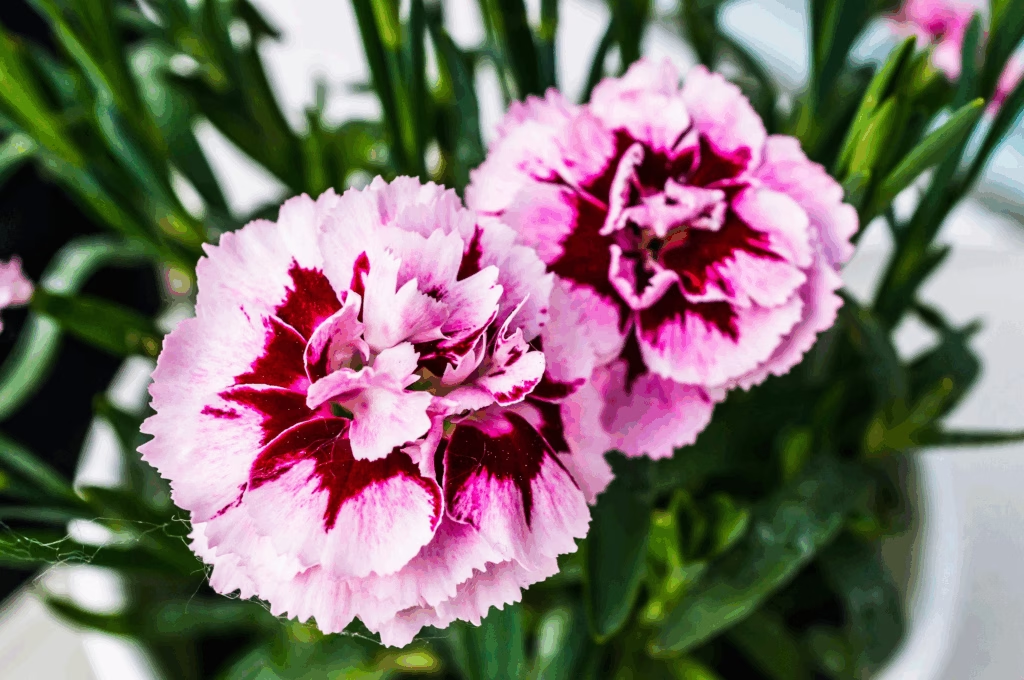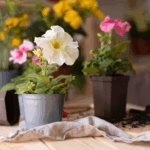The dianthus flower—sometimes called “pinks,” “sweet williams,” or “carnations”—is a timeless favorite in home gardens. Known for their clove-like fragrance, frilled petals, and striking colors, dianthus are versatile flowers that thrive in borders, rock gardens, and containers.

If you’re looking to add a splash of color to your garden with minimal effort, dianthus is a perfect choice. This guide covers everything you need to know about how to grow dianthus flowers successfully at home.
Why Grow Dianthus Flowers?
- Low Maintenance: Requires little care once established.
- Long Blooming Season: Blooms from late spring to early fall.
- Fragrant Blooms: Fills your garden with a sweet, spicy scent.
- Versatile Planting: Perfect for beds, edging, or pots.
- Attracts Pollinators: Bees and butterflies love dianthus flowers.
Best Varieties of Dianthus
Some popular dianthus types for home gardeners include:
- Dianthus barbatus (Sweet William): Biennial/perennial with clustered blooms.
- Dianthus chinensis (Chinese Pink): Bright, annual blooms great for containers.
- Dianthus caryophyllus (Carnation): Larger flowers, often grown as cut flowers.
- Dianthus gratianopolitanus (Cheddar Pink): Hardy, fragrant perennial.
Ideal Growing Conditions
To grow dianthus flowers successfully, pay attention to these growing requirements:
1. Sunlight
- Prefers full sun (6+ hours daily).
- Can tolerate partial shade but may produce fewer blooms.
2. Soil
- Well-drained, slightly alkaline soil (pH 6.5–7.5).
- Add lime if your soil is too acidic.
- Enrich with compost for better growth.
3. Watering
- Keep soil evenly moist but not soggy.
- Avoid overhead watering to prevent fungal diseases.
- Established plants are somewhat drought-tolerant.
4. Temperature
- Ideal temperature: 15°C–25°C (59°F–77°F).
- Hardy to USDA zones 3–9 (variety-dependent).
How to Plant Dianthus Flowers
From Seeds
- Start seeds indoors 6–8 weeks before the last frost.
- Use a light seed-starting mix.
- Sow seeds shallowly (just cover with soil).
- Keep moist until seedlings emerge.
- Transplant outdoors after frost danger passes.
From Seedlings or Cuttings
- Buy nursery seedlings for quicker blooms.
- Plant in spring or early fall.
- Space plants 6–12 inches apart depending on the variety.
Caring for Dianthus Flowers
Fertilization
- Feed with a balanced fertilizer once a month during the growing season.
- Avoid over-fertilizing—too much nitrogen leads to more foliage than flowers.
Deadheading
- Regularly remove spent blooms to encourage continuous flowering.
Pruning
- Trim plants after the first flush of flowers to promote reblooming.
Mulching
- Apply a light mulch to retain soil moisture.
- Avoid thick mulch directly around the crown to prevent rot.
Common Pests and Problems
- Aphids & Spider Mites: Treat with insecticidal soap.
- Slugs & Snails: Use natural traps or barriers.
- Rust & Powdery Mildew: Avoid wetting foliage, ensure proper spacing.
Overwintering Dianthus
- In colder climates, mulch lightly to protect roots.
- Perennial dianthus may die back but return the following spring.
Best Companion Plants
Dianthus pairs beautifully with:
- Lavender
- Shasta daisies
- Roses
- Echinacea
- Salvia
Uses of Dianthus Flowers
- Garden Borders: Ideal for edging walkways and beds.
- Containers: Brightens patios and balconies.
- Cut Flowers: Long-lasting, fragrant blooms for vases.
- Edible Uses: Some dianthus petals are edible and used in teas or salads.
FAQs on Growing Dianthus Flowers
Q1: Do dianthus flowers come back every year?
Yes, perennial varieties return each year, while annual types last for one season.
Q2: How often should I water dianthus?
Water once or twice a week, depending on weather and soil drainage.
Q3: Do dianthus need full sun?
Yes, they bloom best in full sunlight.
Q4: Can dianthus grow in pots?
Absolutely—choose dwarf or compact varieties for containers.
Conclusion
Growing dianthus flowers is easy and rewarding, whether you’re planting them in a garden bed, border, or container. With proper sunlight, well-drained soil, and regular care, these cheerful blooms will brighten your garden and delight with their fragrance for months.
Ready to start gardening? Explore more guides on Agzora.com for composting, organic gardening, and seasonal planting tips.





